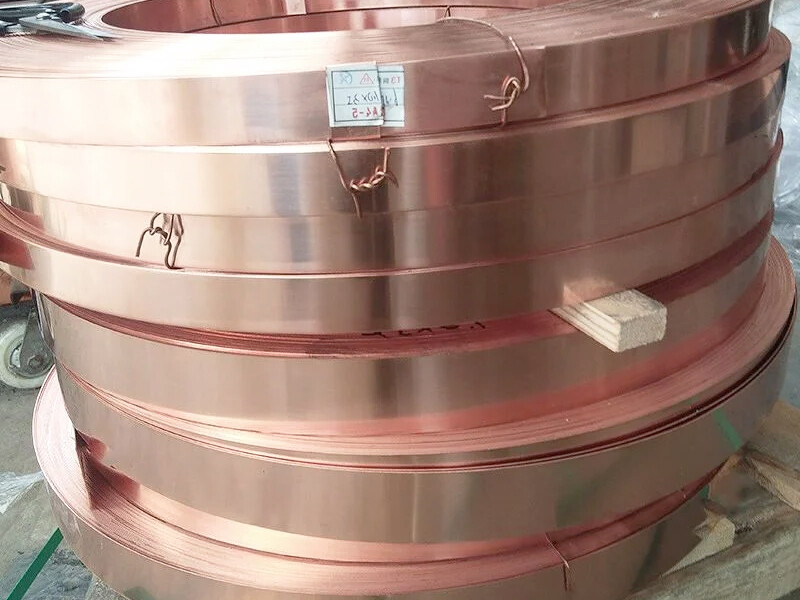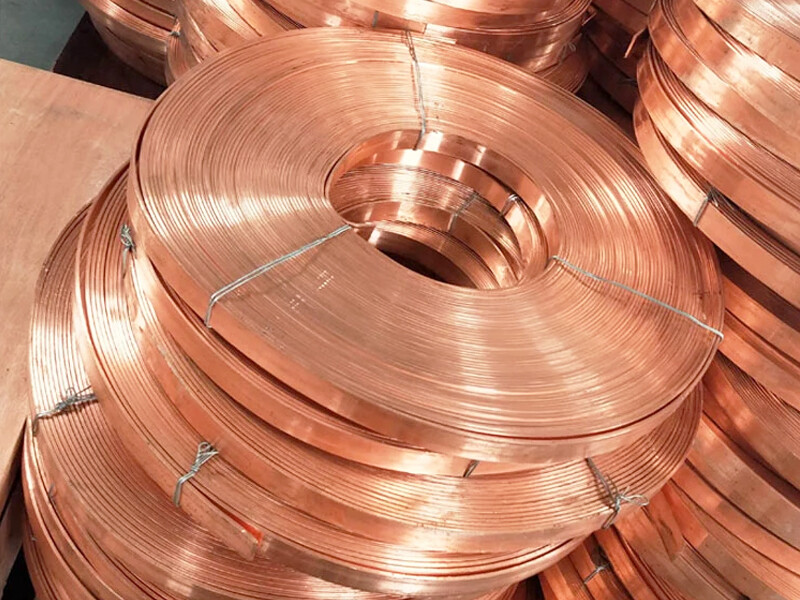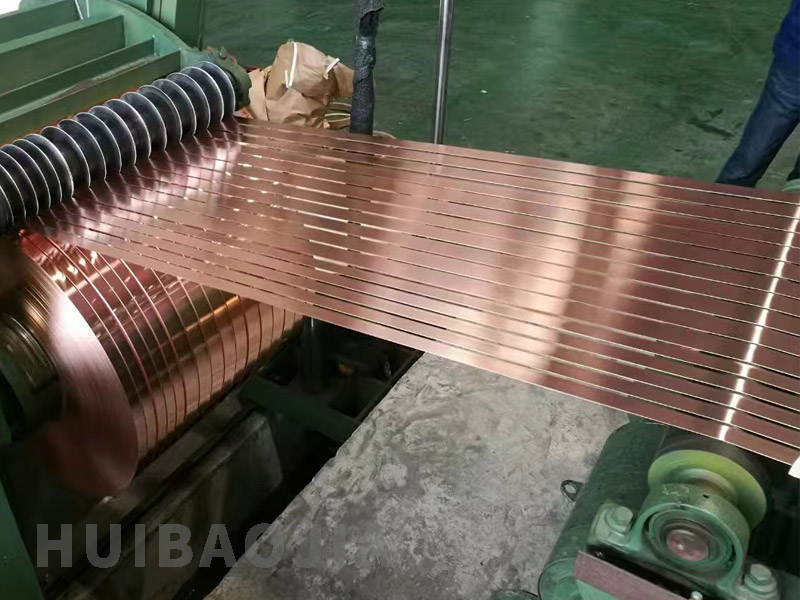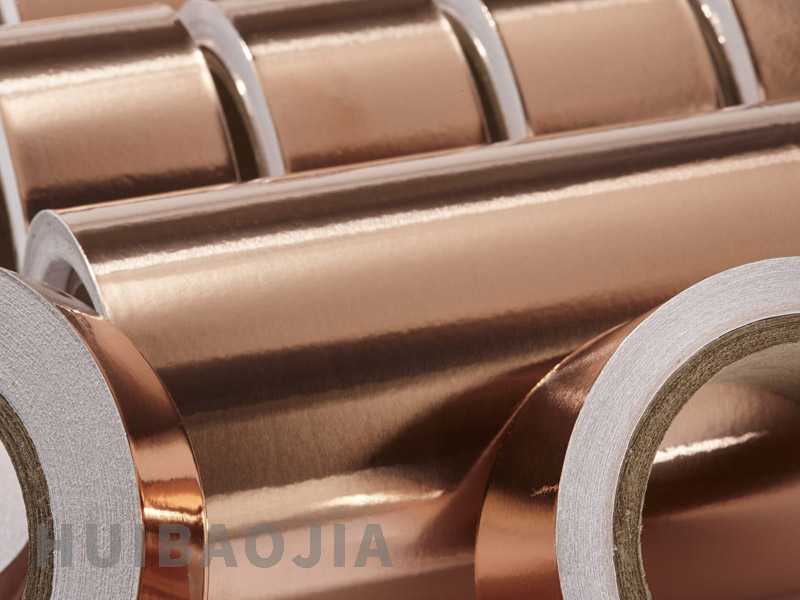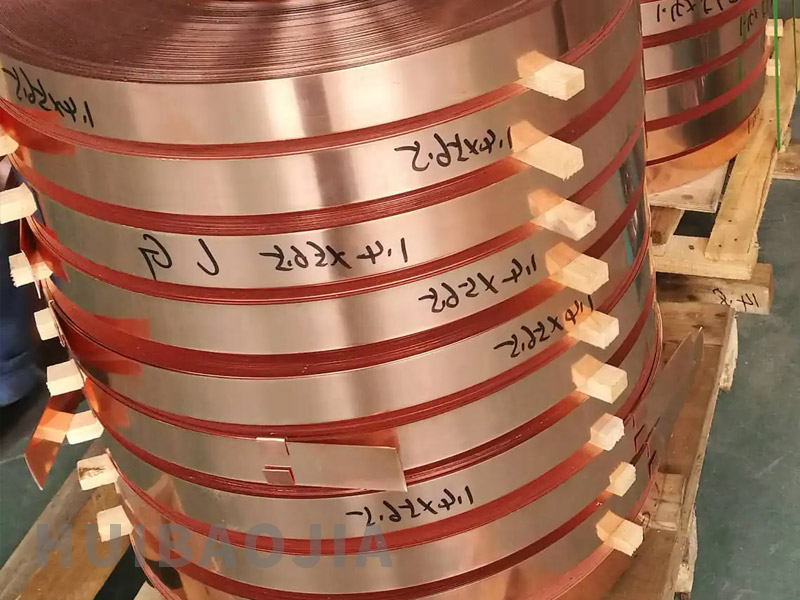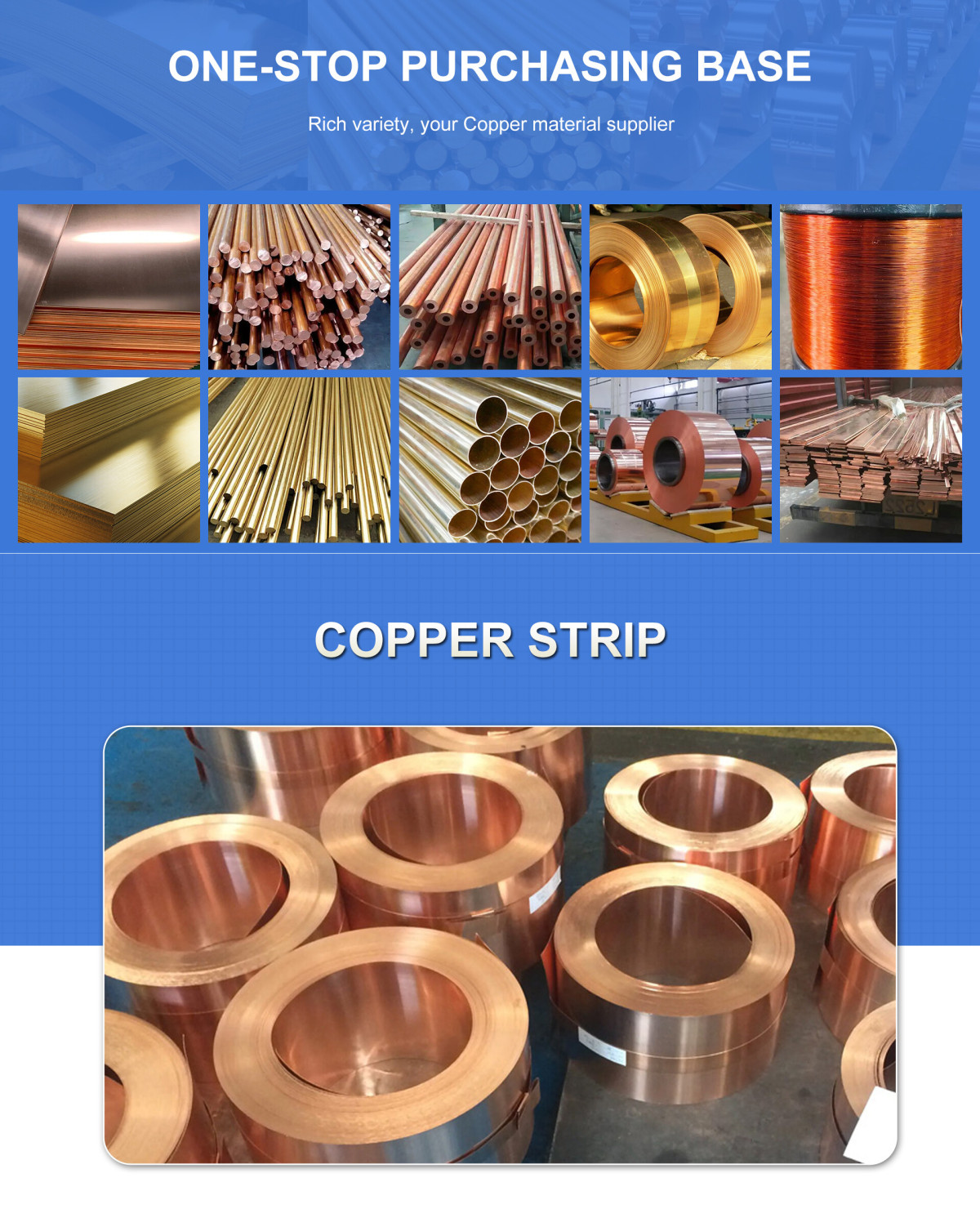
The size range and international standards of C12200 copper strip are as follows:
Size range
Thickness:
According to the Chinese national standard "Copper Strip for Cables" (latest version in 2025), the thickness range of C12200 copper strip is 0.07mm~1.5mm, covering the needs from ultra-thin to medium thickness. Among them, the allowable deviation of strips with a thickness of >0.8mm is also increased accordingly.
The thickness range of other application scenarios (such as industrial rolling) is wider, for example, the thickness of copper strip for lead frames is 0.10mm~2.0mm
, and it can even reach 0.05mm~60mm (such as copper tubes or customized products) under some international standards or special processing requirements.
Width:
The standard width range of copper strip for cables is 10mm~305mm, which is further expanded from the old version of the standard (15mm~305mm) to meet more flexible processing needs.
In other international standards (such as EN 13599) or industrial uses, the width range can be extended to 8mm~1250mm, depending on the rolling process and application scenario.
State and processing:
Copper strip for cable has added O60 (soft annealing state), H01 (1/4 hard state), H02 (1/2 hard state) and other states suitable for power cables.
The typical thickness segmentation of cold-rolled strip is: 0.3~0.5mm, 0.5~3.0mm, 3.0~12mm, and the width can reach 3000mm (depending on the specific rolling process).
International standards
The international standards for C12200 copper strip cover multiple systems, mainly including:
ASTM standards:
ASTM B248 (general specifications for copper plates, strips, and sheets) defines the mechanical properties, electrical properties and dimensional tolerances of C12200.
ASTM B42 (copper tube standard) is applicable to C12200 copper tube products, but strips mainly refer to B248.
EN standards:
EN 13599 (copper plates, strips and strips for electrical purposes): specifies the dimensions and properties of highly conductive copper strips, with a thickness range of 0.05mm to 5.00mm.
EN 1652 (general purpose plates, strips and strips): covers a wider range of industrial uses, with a thickness of up to 5mm and a width of up to 1250mm.
JIS standards:
JIS H3250 (copper and copper alloy rolled strips): corresponds to grade C1221, with a thickness range similar to ASTM and a width of up to 610mm.
Chemical composition
Main ingredients:
Copper (Cu): ≥99.90%
Phosphorus (P): 0.015%~0.040%, used for deoxidation and improving processing performance
Impurity restrictions:
Lead (Pb) ≤0.005%, Iron (Fe) ≤0.005%, Sulfur (S) ≤0.005%, Arsenic (As) ≤0.002%, Bismuth (Bi) ≤0.001%, etc. The total amount of impurities is strictly controlled below 0.05%.
Mechanical properties
Mechanical properties vary significantly depending on the material state (such as annealed state, hard-drawn state):
Annealed state (O60, etc.):
Tensile strength: 205-275 MPa
Yield strength: 69-100 MPa
Elongation: ≥25%-45%
Hardness: 55-100 HV.
Hard-drawn state (H80, etc.):
Tensile strength: 250-410 MPa
Yield strength: 220-400 MPa
Elongation: 5%-10% (lower in hard state)
Hardness: 75-125 HV.
Other general properties:
Elastic modulus: 117-132 GPa
Shear modulus: 43 GPa
Poisson's ratio: 0.34
Density: 8.94-9.0 g/cm³.
Special state examples
H040/R200 state (semi-hard state): tensile strength 200-250 MPa, elongation ≥42%.
H110/R360 state (full hard state): tensile strength ≥360 MPa, elongation ≥5%.
Key characteristics
Electrical conductivity/thermal conductivity: electrical conductivity 79%~85% IACS, thermal conductivity 340 W/m·K, close to the level of pure copper.
Corrosion resistance: resistant to soil, non-oxidizing acid and salt water corrosion, suitable for pipelines and marine environments.
Processability: excellent ductility in annealed state, hard state suitable for high-strength demand scenarios.

The production process and product advantages of C12200 copper strip are as follows:
1. Production process
Melting and casting process
After the raw materials are pretreated, batched and melted, the ingots are produced by vertical semi-continuous casting technology. During the smelting process, trace phosphorus (0.013%~0.050%) is added for deoxidation to reduce the oxygen content to avoid "hydrogen disease" (risk of hydrogen embrittlement).
Hot rolling and cold rolling
After the ingot is heated, it is hot rolled, then the surface oxide layer is removed by milling, and then it is cold rolled several times to reach the target thickness (as low as 0.05 mm). The thickness tolerance of the copper strip after cold rolling can be controlled within ±0.003 mm to meet high precision requirements.
Annealing treatment
Annealing is required after cold rolling to eliminate work hardening. The annealing temperature range is 400~600℃ (soft state) or 700~1200℉ (hard state adjustment). The annealing process can optimize the ductility and mechanical properties of the material.
Surface treatment and finishing
After degreasing, rinsing, and flux coating, the copper strip can be subjected to surface treatments such as hot-dip tinning (such as environmentally friendly reflow tinning process), and finally the finished product is completed through slitting, coiling and testing.
5. Quality control
The risk of hydrogen embrittlement, cold working cracking tendency and conductivity stability need to be monitored throughout the production process to ensure compliance with domestic and international standards such as ASTM B42 and GB/T.
2. Product advantages
Excellent electrical and thermal conductivity
The electrical conductivity reaches 79%~85% IACS, and the thermal conductivity is 340 W/(m·K), which is suitable for high-sensitivity signal transmission and heat dissipation scenarios (such as semiconductor packaging, electrical connectors).
High processing adaptability
Supports cold/hot forming, high-precision stamping, bending and deep drawing processes, compatible with various welding methods such as oxyacetylene welding and gas shielded arc welding, and has stable surface treatment (tinning, polishing) performance.
Hydrogen embrittlement and corrosion resistance
The phosphorus deoxidation process significantly reduces the oxygen content (≤0.01%), avoiding the risk of hydrogen embrittlement. At the same time, it performs well in reducing atmospheres and is suitable for high-temperature welding and marine engineering environments.
Diversity of specifications and high precision
The thickness range is 0.05~1.5 mm, the width is 10~305 mm, the roll weight is up to 6 tons, and the tolerance control is strict (such as ±0.003 mm), which meets the precision requirements of cables, electronic components, etc.
Meet high standards and extensive certification
Meet the requirements of ASTM B42, B152, and the national standard "Copper Strip for Cables". The mechanical properties (tensile strength 215~360 MPa, elongation ≥25%) and electrical performance indicators are better than international similar standards.
Wide range of applications
Covering power cables, semiconductor packaging, automotive parts (brake systems, radiators), building water pipes and seawater desalination equipment, with both lightweight and high-strength design potential.
Q1:Do you provide samples? Is it free or extra?
A1:Yes, we can provide samples free of charge and the customer will pay the freight.
Q2:What if I don't have export experience ?
A2:We have reliable forwarder agent which can ship items to you by sea/air/Express to your doorstep. Any way, we will help you choose the most suitable shipping service.
Q3:How long is your lead time?
A3:If it is in stock, it is usually 5-10 days. Or, if there is no inventory, 15 days, depending on the quantity.
Q4:What are your terms of payment?
A4:30% T/T deposit in advance, 70% T/T balance within 5 days after B/L copy, 100%.Irrevocable L/C at sight, 100% Irrevocable L/C after receive B/L 30-120 days, O/A.
Q5:How is your technical support?
A5:We provide lifetime online support through Whatsapp/ Skype/ Wechat/ Email. Any problem after delivery, we will offer you call anytime.
Welcome To Your Inquiry
What can we help you?
RELATED PRODUCTS



